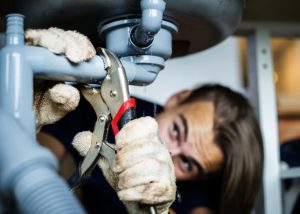Just how do you feel in regards to Locating water leaks?

Early detection of dripping water lines can alleviate a potential calamity. Some little water leaks might not be noticeable.
1. Check Out the Water Meter
Every house has a water meter. Examining it is a guaranteed manner in which helps you uncover leaks. For beginners, turn off all the water sources. Make certain nobody will certainly purge, utilize the tap, shower, run the washing maker or dishwasher. From there, go to the meter and also watch if it will alter. Considering that no person is using it, there ought to be no activities. That shows a fast-moving leakage if it moves. If you detect no modifications, wait a hr or 2 and also check back once again. This indicates you might have a slow-moving leak that could even be underground.
2. Inspect Water Intake
Assess your water bills as well as track your water usage. As the one paying it, you should notice if there are any discrepancies. If you detect sudden changes, in spite of your intake being the same, it indicates that you have leakages in your plumbing system. Remember, your water expense must fall under the very same range on a monthly basis. A sudden spike in your expense indicates a fast-moving leak.
On the other hand, a consistent boost monthly, even with the same behaviors, reveals you have a sluggish leak that's additionally slowly escalating. Call a plumber to thoroughly examine your residential or commercial property, especially if you really feel a warm location on your floor with piping below.
3. Do a Food Coloring Test
When it comes to water consumption, 30% comes from bathrooms. If the shade somehow infiltrates your bowl throughout that time without flushing, there's a leak between the container and dish.
4. Asses Outside Lines
Don't fail to remember to check your outdoor water lines also. Test spigots by attaching a yard tube. Ought to water permeate out of the link, you have a loose rubber gasket. Replace this as well as ensure all connections are limited. It will certainly aid obtain it professionally analyzed as well as kept each year if you've got a lawn sprinkler system. One tiny leakage can throw away tons of water and spike your water expense.
5. Inspect and Evaluate the Situation
Property owners need to make it a practice to examine under the sink counters and even inside closets for any kind of bad odor or mold and mildew development. These two red flags suggest a leak so timely focus is called for. Doing routine examinations, also bi-annually, can conserve you from a significant trouble.
Check for stainings and damaging as a lot of devices and pipelines have a life expectancy. If you presume leaking water lines in your plumbing system, do not wait for it to escalate.
Early detection of leaking water lines can mitigate a prospective disaster. Some small water leakages may not be noticeable. Checking it is a proven method that aids you discover leakages. One little leak can throw away heaps of water and surge your water costs.
If you think dripping water lines in your plumbing system, don't wait for it to intensify.
WARNING SIGNS OF WATER LEAKAGE BEHIND THE WALL
PERSISTENT MUSTY ODORS
As water slowly drips from a leaky pipe inside the wall, flooring and sheetrock stay damp and develop an odor similar to wet cardboard. It generates a musty smell that can help you find hidden leaks.
MOLD IN UNUSUAL AREAS
Mold usually grows in wet areas like kitchens, baths and laundry rooms. If you spot the stuff on walls or baseboards in other rooms of the house, it’s a good indicator of undetected water leaks.
STAINS THAT GROW
When mold thrives around a leaky pipe, it sometimes takes hold on the inside surface of the affected wall. A growing stain on otherwise clean sheetrock is often your sign of a hidden plumbing problem.
PEELING OR BUBBLING WALLPAPER / PAINT
This clue is easy to miss in rooms that don’t get much use. When you see wallpaper separating along seams or paint bubbling or flaking off the wall, blame sheetrock that stays wet because of an undetected leak.
BUCKLED CEILINGS AND STAINED FLOORS
If ceilings or floors in bathrooms, kitchens or laundry areas develop structural problems, don’t rule out constant damp inside the walls. Wet sheetrock can affect adjacent framing, flooring and ceilings.
https://www.servicemasterbyzaba.com/blog/how-to-detect-water-leakage-in-walls/

We hope you liked our part about Top leak detection hacks. Thank you so much for spending some time to read our posting. Those who liked our page kindly do not forget to share it. Thank you so much for taking the time to read it.